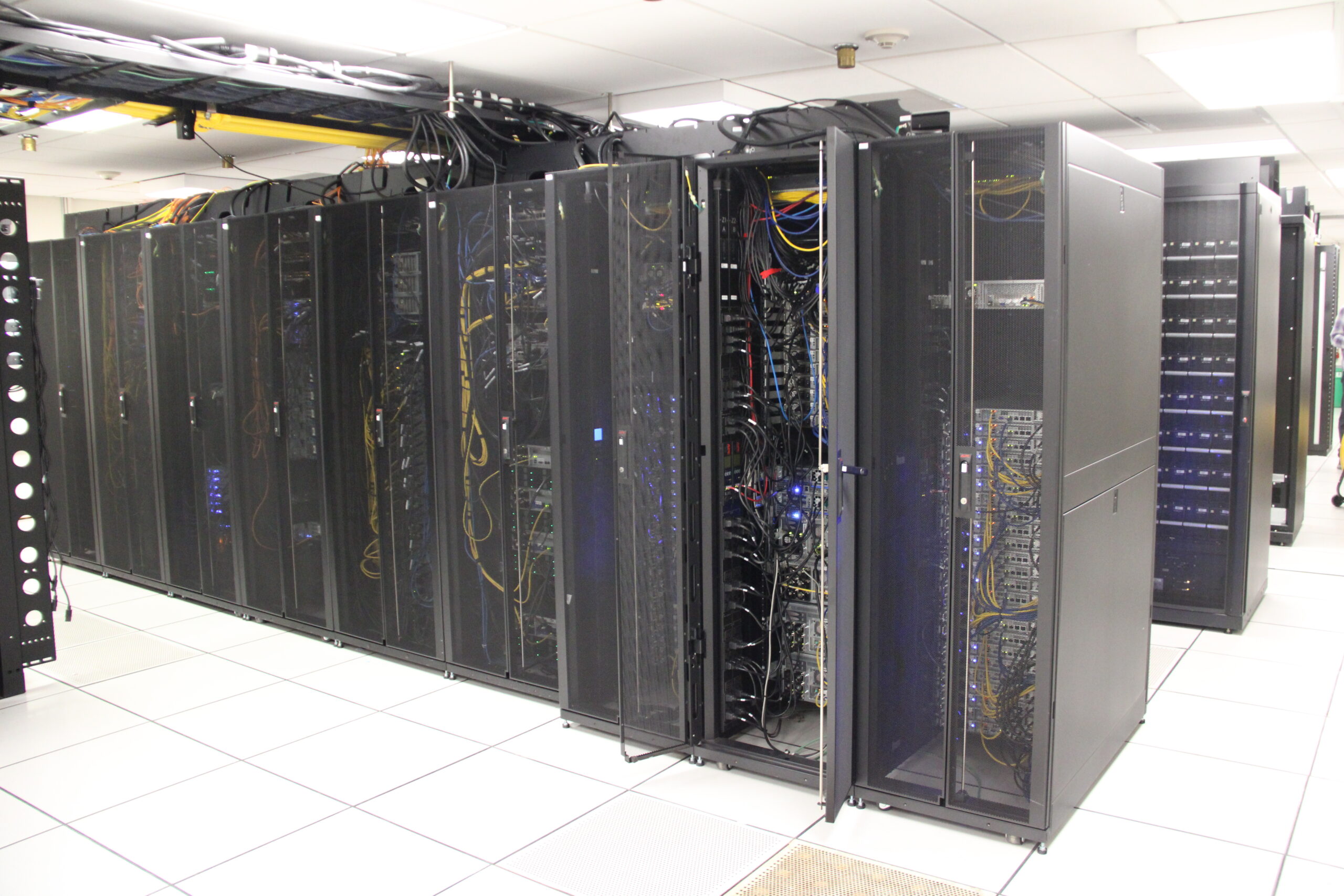Inside the Computational Research Center control system. PHOTO CREDIT: Nick Pierson
The University of Rhode Island’s new Computational Research Center is cultivating research between various departments on campus.
Gaurav Khanna, professor in the department of physics and the director of Research Computing at URI, explained that computational research, or research using computing tools such as algorithms and models, is derived from the expensive costs and limitations of real life experiments.
“Typically when we do science, we talk about sort of theory work, which is sort of, you know, pencil and paper research,” Khanna said. “We also talk about experiments, but what’s been happening over the past few decades is that there’s a middle sort of a middle option that’s developing, oftentimes people refer to as the third pillar of science, which is simulation.”
According to Khanna, simulation allows researchers to envision an experiment in a virtual reality computing environment. Khanna used his own studies as an example of research that is only possible through computing.
“I study black holes primarily as an astrophysicist,” Khanna said. “And I’m sure you immediately realize that there is no way for us to experiment with black holes. I can’t take two black holes, smash them together and see what happens. So the only tool I really have is simulation to sort of envision what would happen if, you know, two black holes merged and so on.”
Karlis Kaugars, URI’s chief information officer of Information Technology Services (ITS), said that the Center is an outgrowth of a department already at the University, information technology services research computing.
“That department had been doing great things, but one of the shortcomings of the department, since it’s a piece of ITS, is that faculty can’t really be associated with it,” Kaugars said. “So one of the things the Center accomplishes is allowing faculty to associate their grants and scholarly activity with the Center.”
The Center is currently virtual, according to Khanna, and doesn’t have a physical location or building.
“It’s really more about bringing people together and holding events and providing them the resources they need to be able to do this type of research,” Khanna said. “So there isn’t a geographic location that’s been assigned, but over time, you know, as we feel the need of actually having shared space, we’ll work towards that.”
Khanna said some of the resources the Center has available include cutting-edge, high-performance supercomputers and servers. These are located in the basement of Tyler Hall and can be accessed remotely from anywhere, another reason why a physical location for the Center isn’t currently necessary.
In addition to Khanna as the director, the Center employs three full time professionals and four graduate students who all focus on different areas in computing.
Khanna said the idea for the Center has been around for nearly two years and finally launched on Jan. 23.
“This month when we launched the center, it was in part, because of the fact that we have the infrastructure ready and up and available,” Khanna said. “We have the team ready, up and available to help, and of course, we have the students who are also trained to provide the help needed.”
Kaugars said that the distinction from the department gives the Center more freedom of action and independence.
“The Center is funded by grants and external money,” Kaugars said. “While ITS is funded by state dollars and tuition resources. So there’s restrictions on how we can use state dollars and tuition that don’t apply to tuition dollars.”
In terms of academic credit, Khanna said there are currently no classes available yet, but for undergraduate or graduate students that want to get involved with the center, they could work and get paid stipends.
For students currently interested in working with the Center, Khanna said that students should find a faculty researcher they’d like to work with or work through and the Center could provide the student and faculty member the tools, training and infrastructure to launch a research project.
One of the main goals of the Center is to foster collaboration between researchers, other universities, and various departments, including humanities and arts, according to Khanna.
“The most amount of progress that’s happening in science today is not in very individual specialized disciplines, but it’s in areas where there’s overlap,” Khanna said. “Partly it’s because some of the very focused original disciplines have already done so much. There’s such a legacy of hundreds of years of effort by brilliant people put in place it’s hard to make a difference. So when you merge fields, you end up getting a lot of collaborative, new ideas.”
With his own research, Khanna hopes to better understand the interior of black holes in the future, and with the Center, he hopes it becomes a “one-stop shop” for all things computing at URI.
“[In the future] I see a flourishing of computational research at the University of Rhode Island,” Kaugars said. “I have a hope that the Center can grow into a nationally, or even internationally, recognized center of excellence in computation, and I think that’s entirely within the realm of possibility here.”





